The Lasiandra ( Tibouchina ) are flowering plants suitable for many garden positions. There are short dwarf varieties and also taller growing varieties. Flowers are mainly purple, violet or other shades of blue, and they provide a wonderful splash of colour in the cooler months of the year , coming into Springtime. The plant pictured is Tibouchina urvilleana, which grows to around 5 metres tall. All the varieties of the plant do best in a sunny spot. Being from Brazil, it is best suited to temperate and warm climates, and does not like frost. I photographed this plant in a Sydney garden close to the Harbour.
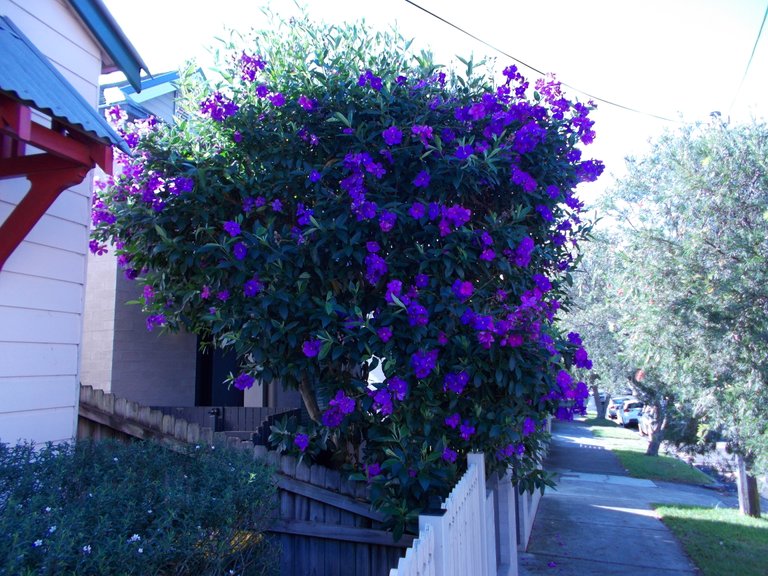
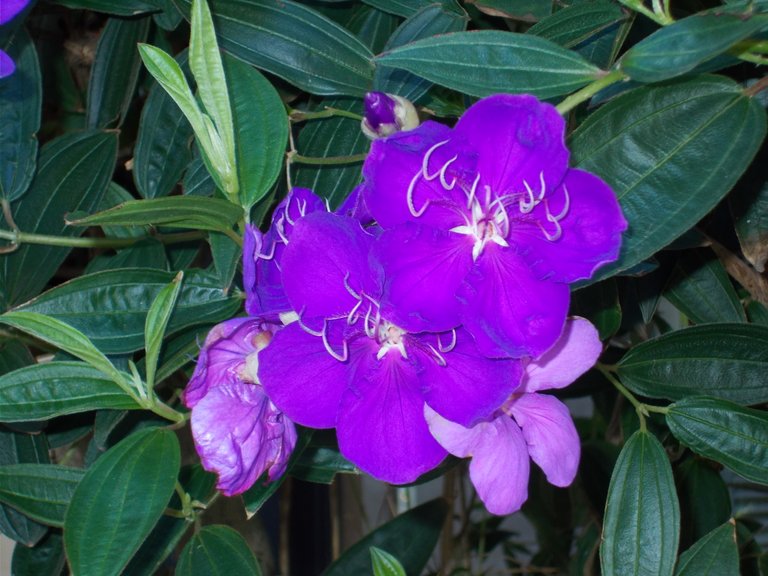
Greetings @ctrl-alt-nwo.
Lovely photographs.....appreciate the introduction to the beautiful Lasiandra.
Kind Regards from bleujay/bentleycapital.
Beautifull photography.
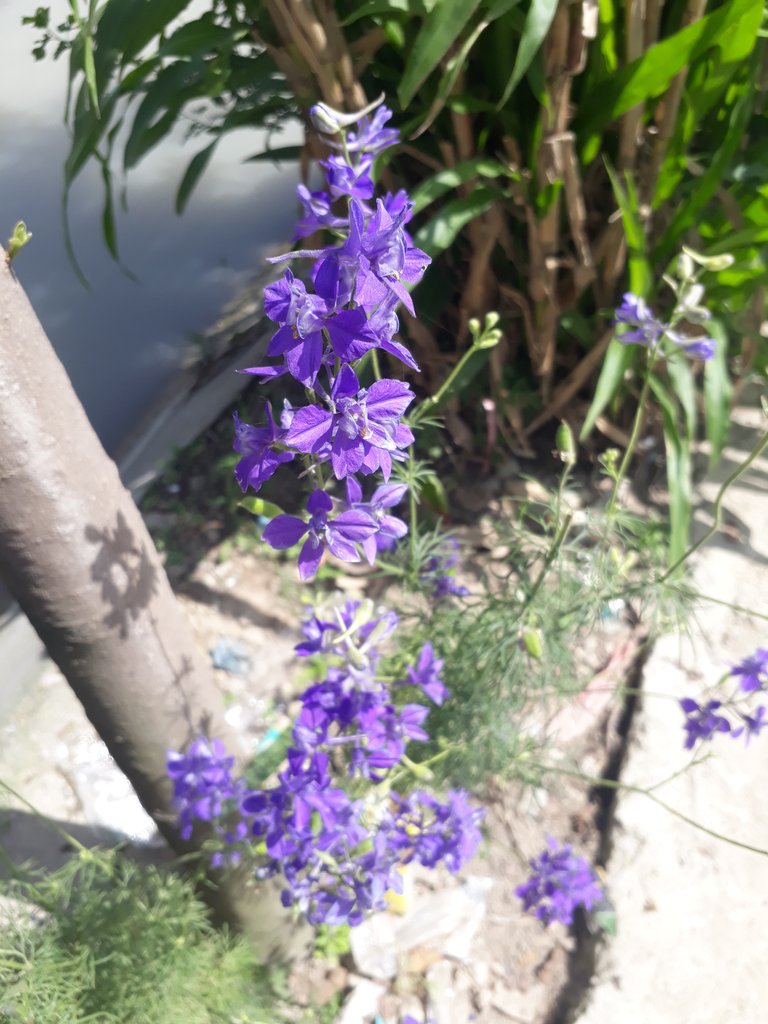
I am also a photographer.
I like it.
Thanks for sharing.
The Tibouchina is a fabulous plant. Some to look out for include Tibouchina 'Kathleen', with its beautiful, mauve-pink flowers. Another that's popular is Tibouchina mutabilis 'Noelene' - the flower starts white and turns to a mauve-pink. It mutates hence the name - mutabilis. And Tibouchina lepidota 'Alstonville' is covered in masses of purple flowers from autumn right through to winter. It's called Alstonville because it was developed in Alstonville in northern New South Wales.
The plants filmed by Gardening Australia are in a garden in the hinterland of the Sunshine Coast where the soil is acidic - absolutely ideal for Tibouchinas. If the soil is not acidic enough the leaf burns at the edges, turns brown and eventually the leaf dies. If that happens correct the soil acidity by adding sulphur on the ground, around the roots, or use an acidifying fertiliser.
They do need pruning, otherwise they will grow into a fairly large tree. Afer they finish flowering, prune the plant back. Delaying the pruning means you throw the whole flowering season out of kilter and this will result in spasmodic flowering.
Link- http://www.abc.net.au/gardening/factsheets/tibouchina/9428216
Congrats, you won the Favourite comment Award for your great Pics and info, well done !
If you love the colour of purple in the garden, then you'll just adore the magnificent flowering Tibouchina.
Tibouchina's are magnificent shrubs that are ideally suited to our tropical to sub-tropical climate. There are many wonderful varieties available that vary in size & colour from 1m shrubs to 6m trees, with deep purples & even pink and white flowers. There are some varieties that flower just about all year round, but their main flowering times are in the warmer months of summer to autumn & they look fantastic!
Tibouchina ‘Alstonville’ – The original Tibouchina, it takes its name from the small north coast NSW town of Alstonville where it was developed by the Tibouchina enthusiast Ken Dunstan. This small tree grows to about 5m to 6m in height and is covered in purple flowers. Perfect for ‘front of house’ planting.
source
Congrats, you won the Silly Sausage Award for your comment ! Great Pics and info.
@ctrl-alt-nwo,
Wow it's too colorful! Fantastic photography and information about this flower! I think I saw that flower in my country! But not 100% sure about that!
Cheers~
Beautiful Brazilian lasiandra shrub with attractive dark green foliage. Exuberant displays of large vivid royal purple flowers mostly in the warmer months, but can flower all year around in a really warm site. Easily grown in light frost areas, in good soil. Trim to maintain a bushy shape.
This fast-growing species is suitable for beginners, requiring little maintenance. It grows best in fertile, moist, but well-draining soil that is slightly acidic. Space individuals 2.4 - 3 m apart. Protect this species from wind and direct afternoon sun during hot weather. Feed plants with a phosphorus rich fertilizer after blooming. This species has a sprawling growth habit, so pinch branch tips to promote branching and gently prune after flowering to form a bushy, round shape. It can also be planted in a large container and placed on a sunny patio. This species is usually resistant to pests and diseases, but sometimes attacked by nematodes, scale insects and geranium budworm. Avoid overwatering to prevent plants from developing mushroom root rot.
https://florafaunaweb.nparks.gov.sg/Special-Pages/plant-detail.aspx?id=2513
Lasiandra a fast-growing species is suitable for beginners, requiring little maintenance. It grows best in fertile, moist, but well-draining soil that is slightly acidic. Space individuals 2.4 - 3 m apart. Protect this species from wind and direct afternoon sun during hot weather. Feed plants with a phosphorus-rich fertilizer after blooming.
This species has a sprawling growth habit, so pinch branch tips to promote branching and gently prune after flowering to form a bushy, round shape. It can also be planted in a large container and placed on a sunny patio. This species is usually resistant to pests and diseases but sometimes attacked by nematodes, scale insects, and geranium budworm. Avoid overwatering to prevent plants from developing mushroom root rot.
This species is often used as an ornamental shrub in subtropical and tropical climates. It may be used as a specimen plant, as the large, bright purple flowers are sure to attract interest. The greyish green, softly hairy leaves provide a contrast in color and texture when placed next to plants with smooth, green foliage.
Branch tips need to be pinched to promote more branching and gently pruned after flowering to form a bushy, round shape. Avoid overwatering to prevent from root rot.
Source
Common name: Glory Bush, Lasiandra, Princess Flower, Pleroma, Purple Glory Tree
Tibouchina urvilleana are evergreen plants from the tropical rainforest in southern Brazil. They are widely cultivated in warm regions for its soft foliage and showy purple flowers.
The Tibouchina urvilleana grows as a large, woody shrub or tree up to 3m (10 feet) height and it is a truly spectacular plant when in full bloom, bearing magnificent, saucer-shaped purple flowers with an iridescent sheen which are set off to perfection by the velvety foliage.
Tibouchina urvilleana can become invasive species in tropical and subtropical environments outside of their cultivation range. All Tibouchina species are considered noxious weeds in Hawaii.
Tibouchina urvilleana is a shrub that grows up to a metre (3 feet) as so tall indoors. Its four-angled stems and branches are soft, green and covered with fine, reddish hairs when young. Later the stems turn woody and brown. The velvety, pointed-oval, paired leaves are medium to deep green with prominent, pale green, lengthwise veins and finely toothed edges. Each leaf is 5-10cm (2-4 inch) long and 2-3cm (0.8-1 inch) wide.
The striking saucer-shaped, five-petaled flowers are rosy purple to violet colour with a cluster of protruding purple stamens in the centre. Each flower is about 8cm (3 inch) across. The flowers are produced in clusters at branch tips from mid-summer to early winter.
Source
Tibouchina Aubl. is a Neotropical flowering plant genus in Melastomataceae Juss. that contains approximately 240 species. Species of this genus are herbs, shrubs or trees and typically have purple flowers.
They are native to Mexico, the Caribbean, and South America where they are found as far south as northern Argentina. Members of this genus are known as glory bushes, glory trees or princess flowers.
The name Tibouchina is adapted from a Guianan indigenous name for a member of this genus . A recent systematic study has shown that this genus is paraphyletic.
Souce : https://en.wikipedia.org/wiki/Tibouchina
Tibouchina
Tibouchina Aubl. is a Neotropical flowering plant genus in Melastomataceae Juss. that contains approximately 240 species. Species of this genus are herbs, shrubs or trees and typically have purple flowers.
Distribution and habitat: Tibouchina urvilleana are evergreen plants from the tropical rainforest in southern Brazil. They are widely cultivated in warm regions for its soft foliage and showy purple flowers.

The Tibouchina urvilleana grows as a large, woody shrub or tree up to 3m (10 feet) height and it is a truly spectacular plant when in full bloom, bearing magnificent, saucer-shaped purple flowers with an iridescent sheen which are set off to perfection by the velvety foliage.
Tibouchina urvilleana can become invasive species in tropical and subtropical environments outside of their cultivation range. All Tibouchina species are considered noxious weeds in Hawaii.
Description: Tibouchina urvilleana is a shrub that grows up to a metre (3 feet) as so tall indoors. Its four-angled stems and branches are soft, green and covered with fine, reddish hairs when young. Later the stems turn woody and brown. The velvety, pointed-oval, paired leaves are medium to deep green with prominent, pale green, lengthwise veins and finely toothed edges. Each leaf is 5-10cm (2-4 inch) long and 2-3cm (0.8-1 inch) wide.
The striking saucer-shaped, five-petaled flowers are rosy purple to violet colour with a cluster of protruding purple stamens in the centre. Each flower is about 8cm (3 inch) across. The flowers are produced in clusters at branch tips from mid-summer to early winter.
Proper care: Tibouchina urvilleana is grown as indoor plants but require some special conditions and are unlikely to thrives without them. It has a fairly narrow margin for error: leaf drop and plant decline are unfortunately common, most often because of watering or temperature issues.
It is a fast growing shrub. Shorten main shoots by half their length and cut side-shoots back to two pairs of leaves each spring. In this way the leggy growing habit of Tibouchina urvilleana is kept under control and will enhance the flower display.
http://www.plantsrescue.com/tag/tibouchina-urvilleana
Blue is my favorite ,so is your pics making me....
Wow really nice beautiful flower and photographs also looking great. Tibouchina urvilleana are evergreen plants from the tropical rainforest in southern Brazil. They are widely cultivated in warm regions for its soft foliage and showy purple flowers.
The Tibouchina urvilleana grows as a large, woody shrub or tree up to 3m (10 feet) height and it is a truly spectacular plant when in full bloom, bearing magnificent, saucer-shaped purple flowers with an iridescent sheen which are set off to perfection by the velvety foliage.
Source
https://www.google.co.uk/url?sa=t&source=web&rct=j&url=http://www.plantsrescue.com/tag/lasiandra/&ved=2ahUKEwjVoZvFypbcAhUrKMAKHXZFA14QFjASegQIBRAB&usg=AOvVaw2oPSzDboMfQ5fIDnP8LyRs
Thanks to share this beautiful flower.
magoo-2 found a series of multi accounts of a same owner is following your articles to cheat your generous rewards.
magoo-2 found these accounts are suspicious & can be multi accounts of a single owner. Conclusion is based on last 30 days transactions:
@rupok
@sarahmcdowell2
@razu788
@tangera
magoo-2
Check our latest multi comment spam update report
Members of Tibouchina sensu lato are diagnosed by a number of traits including pentamerous flowers with anthers having developed pedoconnectives (the connective tissue below the anther locules) and anther appendages that are ventrally bi-lobed. These traits are likely plesiomorphic in the core Melastomeae. The magenta or purple flowers are often showy, and the stamens may be dimorphic. Members of Tibouchina have simple leaves that lack stipules with the conspicuous ladder-like venation that is characteristic of most melastomes. As a member of Melastomeae, Tibouchina also has capsular fruit and cochleate seeds.
All 240 species of Tibouchina s.l. are native to the Americas as far north as Mexico, with a large proportion found in Brazil. Many species of Tibouchina s.l. are found in the Mata Atlantica in eastern Brazil, while many others are found in the cerrado and campos rupestres. Members of Tibouchina sensu stricto tend to be found in lowland savannas and on the lower slopes of the Andes. All Tibouchina species are considered noxious weeds in Hawaii because of their high potential for being invasive species. Within Tibouchina s.s., many species, such as T. papyrus, T. araguaiensis, T. nigricans and T. mathaei, have narrow distributions, being known from only a handful of locations, while a few other species, including T. aspera, T. barbigera, and T. bipenicillata, have broader distributions.
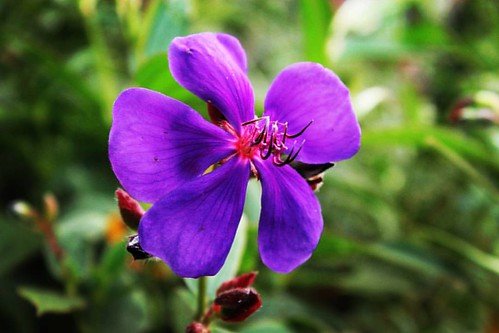
https://en.wikipedia.org/wiki/Tibouchina
Tibouchina
Tibouchina Aubl. is a Neotropical flowering plant genus in Melastomataceae Juss. that contains approximately 240 species. Species of this genus are herbs, shrubs or trees and typically have purple flowers.
the princess flower (Tibouchina urvilleana) is a glorious addition to tropical and sub-tropical gardens. Its large purple flowers and soft hairy leaves add interest and a burst of color to any landscape. It can also be used as an indoor container plant in cooler regions if full light and warmth are provided. Though it is usually a shrub here in the United States, it sometimes becomes large enough to form a small ornamental tree.
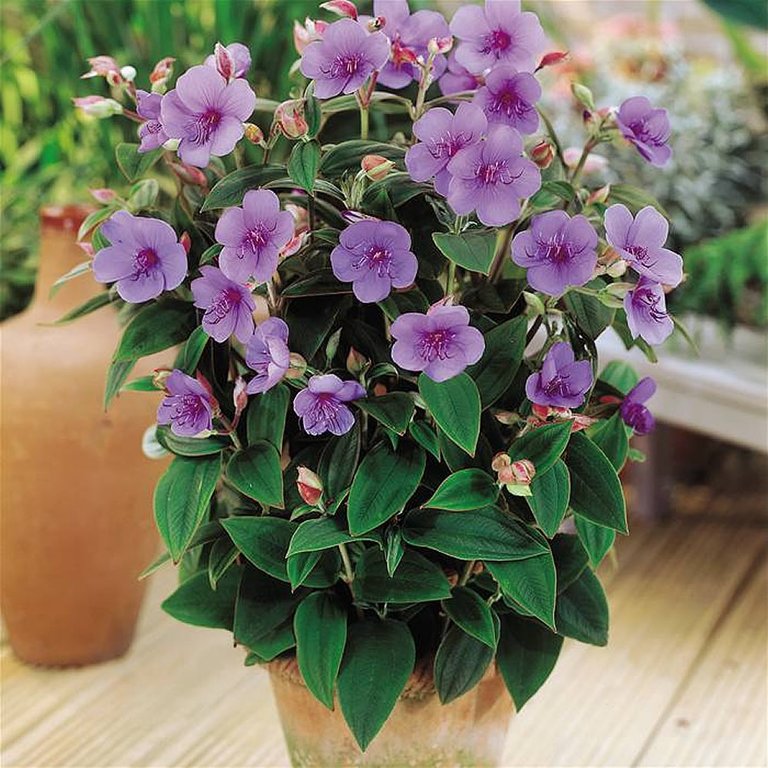

This shrub is a recipient of the Award of Garden Merit given out by the Royal Horticultural Society.
![Tibouchina-urvilleana-Flower.jpg]
Tibouchina is a small tropical tree with beautiful, large purple flowers. It can be grown as a container plant and kept by cutting the size of a bush. The plant is mainly proliferating in tropical regions. Tibouchina is a small evergreen, spreading tree or shrub that grows 3-6 m high from the ground. In the cockpit it is only 50 cm high.
The leaves are green, parallel grained, lanceolate to oval, velvety and 10-20 cm long and 5-10 cm wide. They often show a red border, which makes it even more interesting. The fruit is brown and 1 cm in diameter. The plant is used as an ornamental shrub because of its abundant and long-lasting flowering.
Source
Source
Source
The flowers are purple with black stamens, they measure up to 10-12 cm in diameter. They appear in terminal plumes above the leaves. The abundant flowering can last all year round but mainly takes place from May to January.
Source
Source
Text Source
Tibouchina
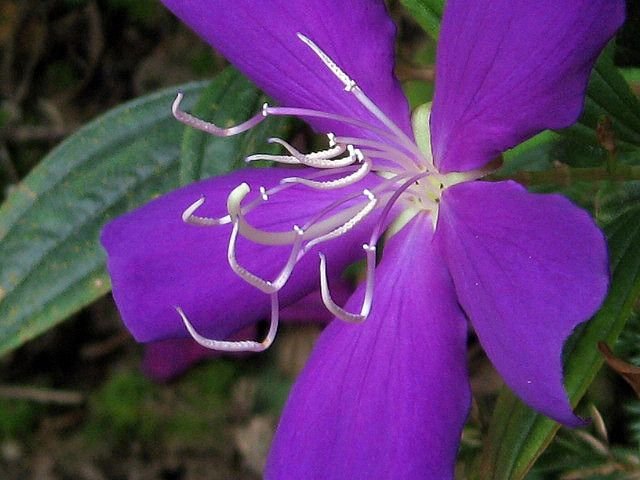
Tibouchina /ˌtɪbuːˈkaɪnə/[1][2] Aubl. is a Neotropical flowering plant genus in Melastomataceae Juss. that contains approximately 240 species.[3][4][5] Species of this genus are herbs, shrubs or trees and typically have purple flowers.[6] They are native to Mexico, the Caribbean, and South America where they are found as far south as northern Argentina.[6][7] Members of this genus are known as glory bushes, glory trees or princess flowers. The name Tibouchina is adapted from a Guianan indigenous name for a member of this genus [2]. A recent systematic study has shown that this genus is paraphyletic.[3]
Morphology
Members of Tibouchina sensu lato are diagnosed by a number of traits including pentamerous flowers with anthers having developed pedoconnectives (the connective tissue below the anther locules) and anther appendages that are ventrally bi-lobed.[3] These traits are likely plesiomorphic in the core Melastomeae.[3] The magenta or purple flowers are often showy, and the stamens may be dimorphic.[6] Members of Tibouchina have simple leaves that lack stipules with the conspicuous ladder-like venation that is characteristic of most melastomes.[6][8] As a member of Melastomeae, Tibouchina also has capsular fruit and cochleate seeds.[6]
https://en.wikipedia.org/wiki/Tibouchina
Tibouchina
Tibouchina Aubl. is a Neotropical flowering plant genus in Melastomataceae Juss. that contains approximately 240 species. Species of this genus are herbs, shrubs or trees and typically have purple flowers.
Sometimes known as glory bushes, Tibouchina lepidota (previously called Lasiandra) begin show their big sumptuous purple flowers in March or April and these continue all through autumn and sometimes into early winter in Sydney. The most commonly seen cultivar is Tibouchina lepidota 'Alstonville', which throbs with opulent colour when back-lit by the autumnal sun. They open from attractive reddish buds and have curled stamens like claws. These plants became popular about fifteen or twenty years ago and so there are many mature specimens to be seen around nowadays, decorating streetscapes and gardens: Sydney seems to have the perfect climate for them, as it does for many South American plants.
They can be shaped as small trees by training to a single trunk, which is what I have now done with my new one, due to pure laziness, after years of cutting back very heavily in late winter so that the shrub would stay around 3m in height. I am not sure how high it will go left unpruned - apparently they sometimes can get to 12m! Anyway, at the moment it fits in well to my semitropical-style garden, and its large veined leaves provide welcome background greenery in every season. Tibouchina can be grown in many tasteful planting schemes of pinks, white, blues and other purples, such as with Camellia sasanqua, crepe myrtles, Salvia (especially some of the tall-growing autumn-flowering ones) , and Brugmansia. True drama can be achieved by pairing the purple flowers with some of the brilliant orange or red blooms of autumn, such as Canna and Dahlia, the bird-like blooms of Strelitzia or red Pentas.
http://www.igarden.com.au/plant-type.jsp?id=208&t=tibouchina
Here and there known as radiance shrubs, Tibouchina lepidota (beforehand called Lasiandra) start demonstrate their huge lavish purple blossoms in March or April and these proceed with all through harvest time and once in a while into late-fall in Sydney. The most generally observed cultivar is Tibouchina lepidota 'Alstonville', which throbs with extravagant shading when illuminated by the harvest time sun. They open from appealing rosy buds and have twisted stamens like paws. These plants wound up prevalent around fifteen or twenty years back thus there are numerous develop examples to be seen around these days, adorning streetscapes and patio nurseries: Sydney appears to have the ideal atmosphere for them, as it improves the situation numerous South American plants.
They can be formed as little trees via preparing to a solitary trunk, which is the thing that I have now finished with my new one, because of unadulterated sluggishness, following quite a while of curtailing vigorously in pre-spring so the bush would remain around 3m in stature. I don't know how high it will go left unpruned - obviously they now and then can get to 12m! Anyway, right now it fits in well to my semitropical-style garden, and its huge veined leaves give welcome foundation greenery in each season. Tibouchina can be developed in numerous classy planting plans of pinks, white, blues and different purples, for example, with Camellia sasanqua, crepe myrtles, Salvia (particularly a portion of the tall-developing harvest time blooming ones) , and Brugmansia. Genuine dramatization can be accomplished by matching the purple blossoms with a portion of the splendid orange or red sprouts of harvest time, for example, Canna and Dahlia, the flying creature like blossoms of Strelitzia or red Pentas.
http://www.igarden.com.au/plant-type.jsp?id=208&t=tibouchina
@ctrl-alt-nwo, Absolutely better introduction of Lasiandra plants with both images. I'm stunning much these flowers. Better to grow corner of the garden in front of. I added some info about Lasiandra plants through internet.
Lasiandra are evergreen plants from the tropical rainforest in southern Brazil. They are widely cultivated in warm regions for its soft foliage and showy purple flowers.
The Lasiandra grows as a large, woody shrub or tree up to 3m (10 feet) height and it is a truly spectacular plant when in full bloom, bearing magnificent, saucer-shaped purple flowers with an iridescent sheen which are set off to perfection by the velvety foliage.
Lasiandra can become invasive species in tropical and subtropical environments outside of their cultivation range. All Lasiandra species are considered noxious weeds in Hawaii.
Lasiandra is a shrub that grows up to a metre (3 feet) as so tall indoors. Its four-angled stems and branches are soft, green and covered with fine, reddish hairs when young. Later the stems turn woody and brown. The velvety, pointed-oval, paired leaves are medium to deep green with prominent, pale green, lengthwise veins and finely toothed edges. Each leaf is 5-10cm (2-4 inch) long and 2-3cm (0.8-1 inch) wide.
The striking saucer-shaped, five-petaled flowers are rosy purple to violet colour with a cluster of protruding purple stamens in the centre. Each flower is about 8cm (3 inch) across. The flowers are produced in clusters at branch tips from mid-summer to early winter.
Thanks for sharing your valuable content.
Source: http://www.plantsrescue.com/tag/lasiandra/
Wonderful Brazilian lasiandra bush with alluring dull green foliage. Rich presentations of vast striking regal purple blooms for the most part in the hotter months, however can blossom all year around in an extremely warm site. Effectively developed in light ice territories, in great soil. Trim to keep up a thick shape.
This quickly developing species is reasonable for apprentices, requiring little upkeep. It develops best in ripe, damp, yet well-depleting soil that is somewhat acidic. Space people 2.4 - 3 m separated. Shield this species from wind and direct evening sun amid sweltering climate. Feed plants with a phosphorus rich manure subsequent to sprouting. This species has a sprawling development propensity, so squeeze branch tips to advance spreading and delicately prune subsequent to blossoming to frame a shaggy, round shape. It can likewise be planted in a substantial holder and set on a radiant yard. This species is normally impervious to vermin and sicknesses, however now and then assaulted by nematodes, scale creepy crawlies and geranium budworm. Abstain from overwatering to keep plants from creating mushroom root spoil.
https://www.calflora.org/cgi-bin/species_query.cgi?where-calrecnum=11066
Really very beautiful photography is shared with us and your picture is a great picture. Your picture impressed me. I shared pictures of some flowers in my post. I do not know if you saw or not. Anyway, I want to say the last thing that your flowers were wonderful, which is very beautiful from my flowers.
This is very beautiful garden and beautiful photography. .it is very looking for this garden.

Thanks @ctrl-alt-nwo
Have a great day
@ctrl-alt-nwo,
I have never seen this flower of plant before! It seems good for fences! Nice photography and information!
magoo-2 found a series of multi accounts of a same owner is following your articles to cheat your generous rewards.
magoo-2 found these accounts are suspicious & can be multi accounts of a single owner. Conclusion is based on last 30 days transactions:
@timuann
@rahulsen
magoo-2
Check our latest multi comment spam update report
Grow up to five meters!! Full of such blue flowers!!
Wonderful plant! I hope that I can find this in Bangkok!
Keep well and strong so that you could post at least one post per week!
Wow amazing & beautiful Blues with the Lasiandra flowers garden.
For your post propagation.
Upvote/Resteem
The Annual Lasiandra Festival kicked off on 5 March, promising a month full of community events.
The first Lasiandra Festival was held in 1984 and it has continued annually since then, always taking place from the second Saturday in March to coincide with the floral spectacular of the lasiandra in bloom.
The festival is run entirely by volunteers and proceeds from the festival are used for the promotion and beautification of Wauchope. There will be something for everyone to enjoy, so check out what’s planned here!
Source
wow amazing photos
can i use them please @ctrl-alt-nwo..?
Tibukhina is an extraordinary plant! A lush bush (sometimes a tree) with beautiful dark-green leafy leaves of an interesting texture is attractive already in itself. But when it is covered with large (6-8 cm in diameter), velvety, bright, like fluorescent, purple flowers, it is simply impossible to tear off it. During flowering, the tibukhina eclipses everything that grows and blooms nearby. Once seen this plant, falls in love with its beauty once and for all. It is not by chance that the tibuchin is also called a princess flower and a shrub-splendor.
http://gardenx.ru/klumby_cvetniki/tibuxina.html
I'm amazed that you really know the information of each plant that you take photos of. Whenever I take photos I don't even know what they are, but thank you for sharing your knowledge and your beautiful photos!
Very beautiful shrub. One of the numerous species of the genus Tybukhin (family Melastomovye), growing in the tropics and subtropics. Other names of this plant: Tibouchina semidichandra (Tibouchina semidecandra), seven-typhi laziander (Lasiandra semidecandra).
Tybukhin Urville in natural conditions is a large evergreen shrub up to 6 m high. This decorative plant has beautiful leaves and chic flowers, solitary or collected in small inflorescences at the top of the shoots. The leaves of the tibuquina are oval, with clearly prominent veins (central and symmetrical lateral), wrinkled, pubescent, 8-12 cm long and 3-6 cm wide
Blooms tybuihina Urville profusely and long, in summer and autumn. Velvety blue or purple-violet flowers of the Urvillian Tibuhina about 8 cm in diameter (under favorable conditions reach 12 cm) appear at the ends of the shoots. When growing a tibuchina in a pot, the size of its bush, leaves and flowers is much more modest.
Tybukhin Urville - heat-loving plant growing in the open ground only in regions with mild climate.
Care of the tibuhina is simple. In summer the plant is kept in a warm, bright place (better in the fresh air). In the period of active growth and flowering, from spring to autumn, the bush is regularly fed with complex fertilizers (three times per month).
http://www.mir-tropicov-doma.ru/shop/1950/desc/tibouchina-urvilleana-tibukhina-urvillja
Lasiandra is such a beautiful flower.it's colour is so attractive.you share a informative piece of knowledge.
Very beautiful garden of photography... thank you so much my dear sir...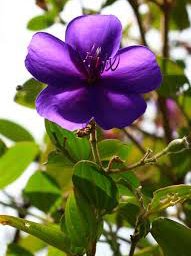 !imang
!imang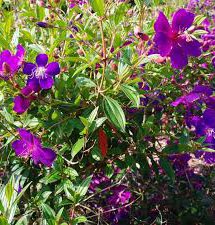 BeautyPlus_20180711161331_save.jpg image
BeautyPlus_20180711161331_save.jpg image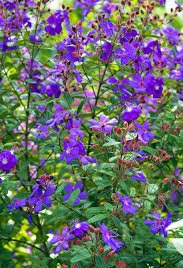
magoo-2 found a series of multi accounts of a same owner is following your articles to cheat your generous rewards.
magoo-2 found these accounts are suspicious & can be multi accounts of a single owner. Conclusion is based on last 30 days transactions:
@triptybarsha
@rakib786
@sujonkhan
@sujonmia
@imamulkhan
@roky77
@dilshan77
@feju
@imu420
@bulet07
magoo-2
Check our latest multi comment spam update report
Geez! It is very beautiful flowers and fun to enjoy.Have a wonderful and successful day always @ctrl-alt-nwo! Regards!
So beautiful garden, thanks for sharing
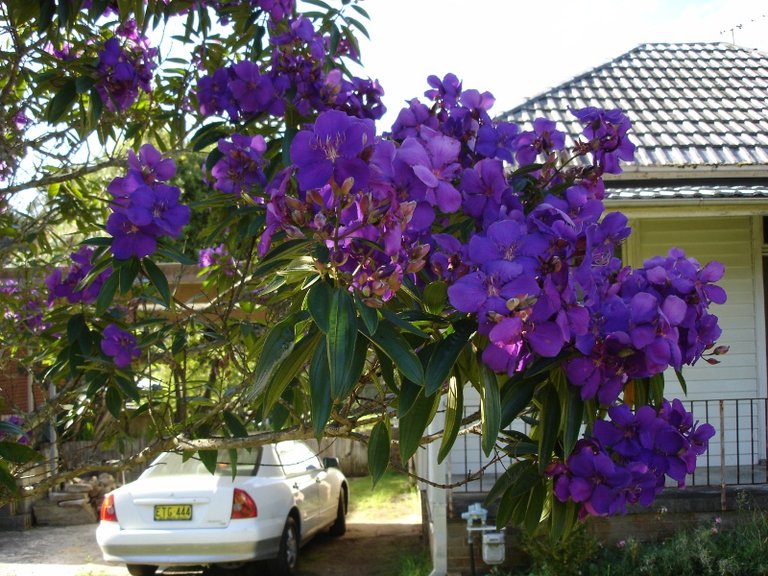
Resteem
Tibouchina urvilleana love full sun, but too much harsh sunlight can also be a problem; in a very hot or dry region plant these shrubs in a sunny location which is semi-shaded during the hottest part of the day.
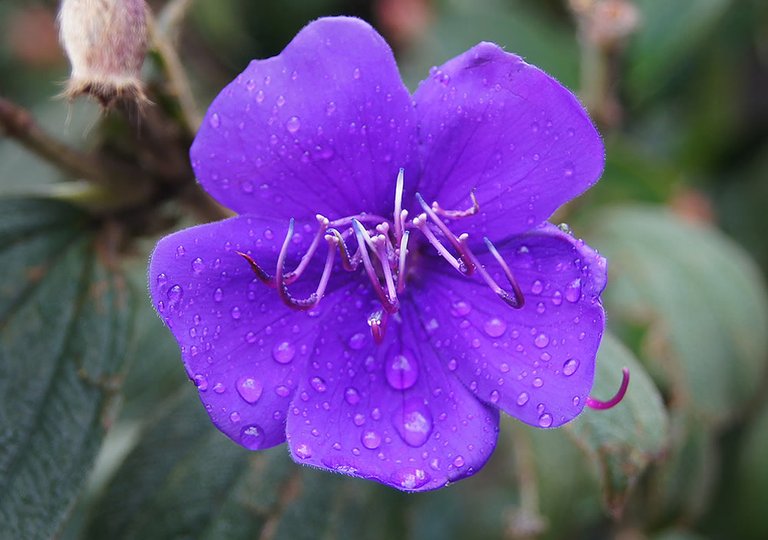
These plants are brittle and prone to breaking in the wind, so plant them in a sheltered position in the garden.
flowers are very nice but in my area this flower is living freely in the forest
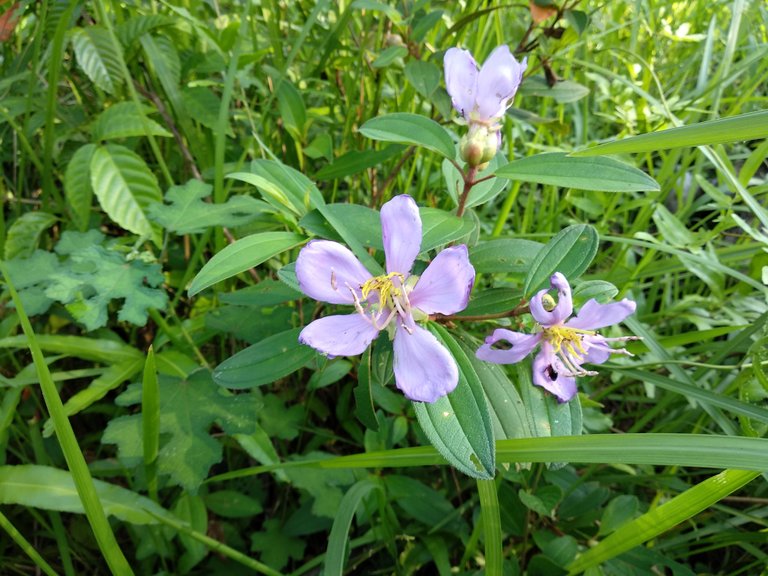
That is a amazing trees and really beautiful flowers. the beat of garden.
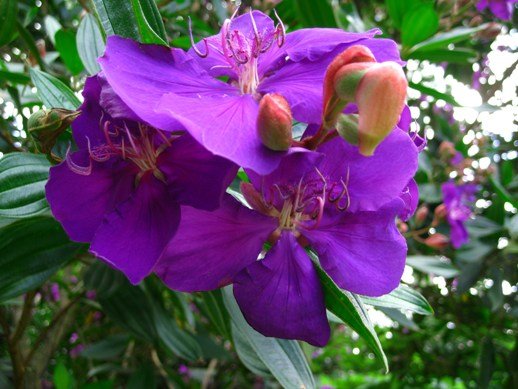
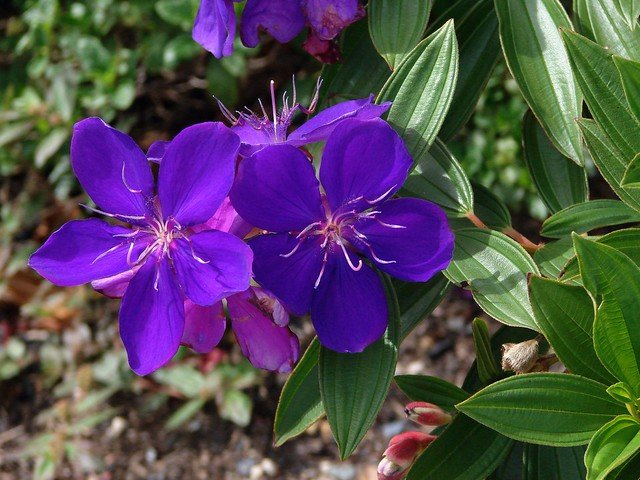
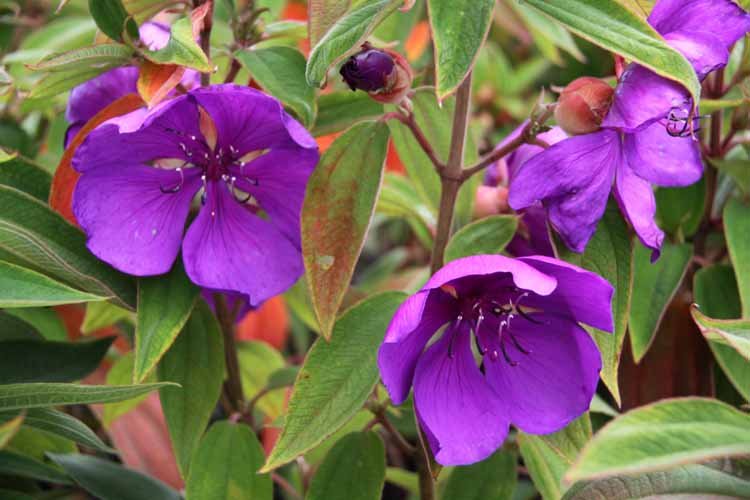
Thanks for the information.
100% like and resteem
Wonderful blog post sir,thanks for these flowers.
Very beautiful garden flower photography.. I love flower... upvote done sir..
magoo-2 found a series of multi accounts of a same owner is following your articles to cheat your generous rewards.
magoo-2 found these accounts are suspicious & can be multi accounts of a single owner. Conclusion is based on last 30 days transactions:
@triptybarsha
@rakib786
@sujonkhan
@sujonmia
@imamulkhan
@roky77
@dilshan77
@feju
@imu420
@bulet07
magoo-2
Check our latest multi comment spam update report